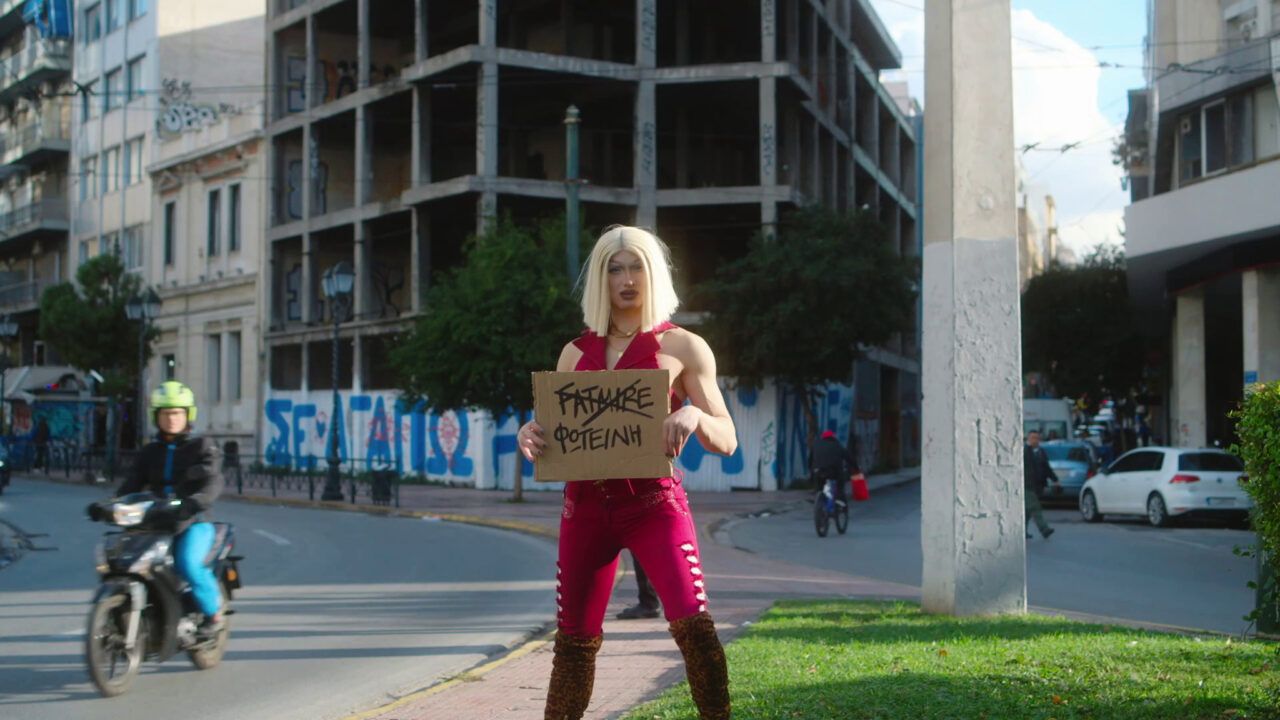{Come Out} with AI: Drag Culture as a Form of AI

This year’s theme at Talents Sarajevo, ART/FICIAL, playfully explores the intersection of art and artificial intelligence, reflecting a hot topic at the 30th Sarajevo Film Festival. The slash symbol in the theme signifies a rupture or glitch in the binary systems of computerized worlds. But what does AI, as a form of software that learns from existing information to generate new knowledge, mean for communities that are already marginalized by the system? How does it relate to those exploring non-binary, gender-fluid, subversive, or transgressive identities?
Consider the late drag queen Divine, who provocatively ate dog feces in front of a massive crowd in John Waters' iconic film Pink Flamingos (US, 1972). Or Turkish drag queen Seyfi Dursunoğlu, who used his “Huysuz Virjin” television persona to give a lesson on oral sex with a banana on public television. When drag culture's elements—such as evolving gender roles, bending social norms, and challenging expectations—come together, can we view it not just as a safe space but as a transformative form of expression or art for queer individuals? Might drag be a way of understanding reality that seeps into the public sphere?
Fil Ieropoulos's second documentary, Avant-Drag! (Greece, 2024), screened at the 30th Sarajevo Film Festival, delves into these questions. The film, divided into ten chapters, presents the experiences of various drag performers from Greece. The story of the duo “Pagan Magnets” exemplifies what I term ‘generative’ queerness. This drag mother-daughter (or perhaps sister-sister) duo evolves their existence by continuously adapting and learning new information, a process beyond the current capabilities of AI software learning.
The film’s narrator, Marisha Triantafyllidou, notes that drag queens and kings do not merely play roles; they continually reinvent them. Drag performances challenge and reinterpret societal gender norms through a creative and dynamic process.
So, how might AI creatively synthesize elements like identity, expression, and performance? While AI can learn and imitate various art forms, even creating new styles based on mainstream data, it struggles with deep countercultural elements inherent in drag culture—elements like subverting dominant discourse, playing with visibility and invisibility, and conveying lived experiences and complex emotions. These aspects are beyond AI's current capabilities.
What if drag queens are already a form of AI themselves, as suggested in Ieropoulos's film? Yet, machine learning processes often fall short in complex situations. For example, drag queens like "Cotsos" in the film return to their birth-assigned gender through their performances. This choice reflects a powerful expression of identity, transforming their assigned gender into a performance space. What if the taboos surrounding one's assigned gender disappeared, making it a safe space to visit and return from?
AI operates on a linear model: it processes input to produce output based on that input, ranking information from most probable to least. It doesn't handle possibilities, fluidity, or becoming. From this perspective, drag occupies a realm that AI cannot fully grasp. Avant-Drag! portrays these possibilities with sensitivity.
The film reinforces that gender is a socially constructed identity, not an inherent trait. This political dimension underscores that drag queens have historically been at the forefront of political debates and social change regarding gender and identity.
Director Fil Ieropoulos describes drag as a radical, psychoanalytic exploration of oneself, transforming diverse bits of information into a living, multilayered artwork. This view of AI contrasts sharply with its industrial use by marketers and the military. Dominic Lees, an associate professor from the University of Reading, highlighted at Talents Sarajevo that AI often fails to represent minorities adequately. He argued that AI, which relies on internet data, predominantly reflects Western perspectives and large markets. Much of the world is not online, and AI’s outputs tend to be clichéd or generic due to its limited data sources.
As seen in Ieropoulos’s film, drag queens exist in a dynamic reality, constantly evolving and multiplying versions of themselves. Their existence seems to receive continuous updates, unlike the limited updates offered by tech companies. While machine learning processes seek to categorize and simplify, drag culture promises an endless array of updates. Could it be possible to transform rather than reject this process? Rather than being excluded and blamed by the system, might it be feasible to infiltrate and reshape AI from diverse perspectives?